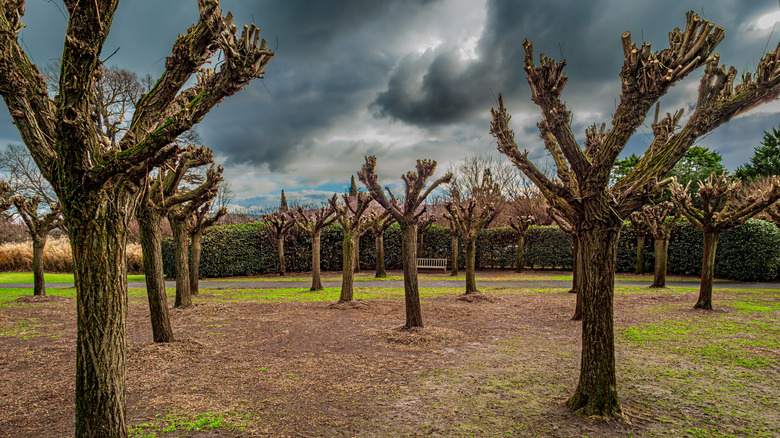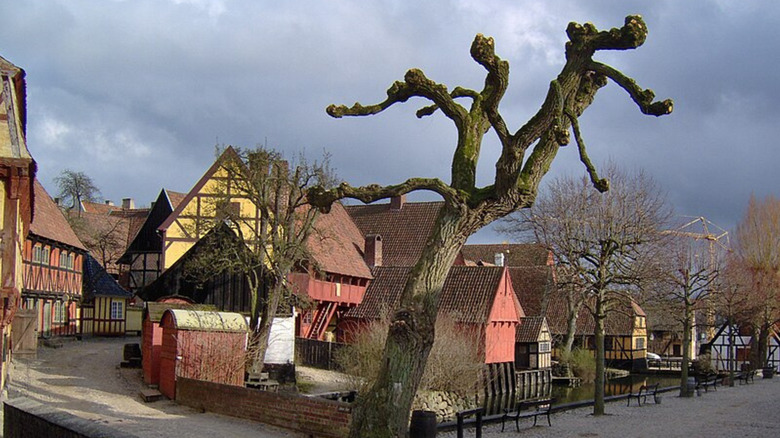Here's Why Some Trees Have Branches That Are Chopped All The Way To The Trunk
It's common to see leaves change color before falling away as autumn turns to winter in temperate regions, but if you find barren trees with branches chopped all the way to the trunk, this is likely the result of a pruning technique known as pollarding. This method aims to ensure that trees (or similar flora, like shrubs) remain at an "ideal" height, particularly if becoming overgrown would outstrip their space in a landscape design or risk hitting power lines or streetlights. Late winter or early spring is considered the best time to chop tree branches in this way, and pollarding should take place every few years — if not annually.
Pollarded trees take on knob-like growths due to calluses forming over repeatedly chopped branches, and these growths are often known as "knuckles." There are numerous techniques available for arboreal pruning, from practical low limbing (also called crown raising) for better visibility beneath the branches, to more aesthetic methodologies like thinning branches or designing topiary. While a more extreme example, evidence for pollarding dates back to the Middle Ages, when it was used to mark land boundaries and stop animals from grazing, often extending the life of these trees in the process.
Be wary of potential problems with pollarding
Knowing how and when to prune a tree will typically promote healthier growth and more lush foliage, especially via techniques like deadwooding, or removing dead branches. However, if improperly handled, pollarding can have serious consequences. Without regular pollarding, a tree may become unbalanced with unkempt, weakly attached branches that break off, obstructing roads or falling onto something — or someone. A tree may also decay if the wounds left by chopped-off branches aren't given appropriate time to heal. Some species are more suitable for pollarding, such as ash, elm, or mulberry trees, meanwhile poplar or willows have weaker wood that's likely to branch off uncontrollably.
It's also important to consider when one should be pollarding. Sap-producing trees should not have their branches chopped away at peak producing seasons, for example, and a barren, wounded tree could be especially affected by extreme heat during the summer or spreading fungi during autumn.
The placement of any trees being pollarded within your area of interest is also worth planning in advance. Fast-growing shade trees can help in your goal to find a spot where they can escape the heat, but it may literally overshadow the trimmed branches of a recently pollarded plant and block necessary sunlight. Seek out expert advice from arborists or landscapers if you believe your own orchard could benefit from pollarding; while expensive to maintain, the technique can produce a finely curated look that's perfect for an aesthetic garden.

